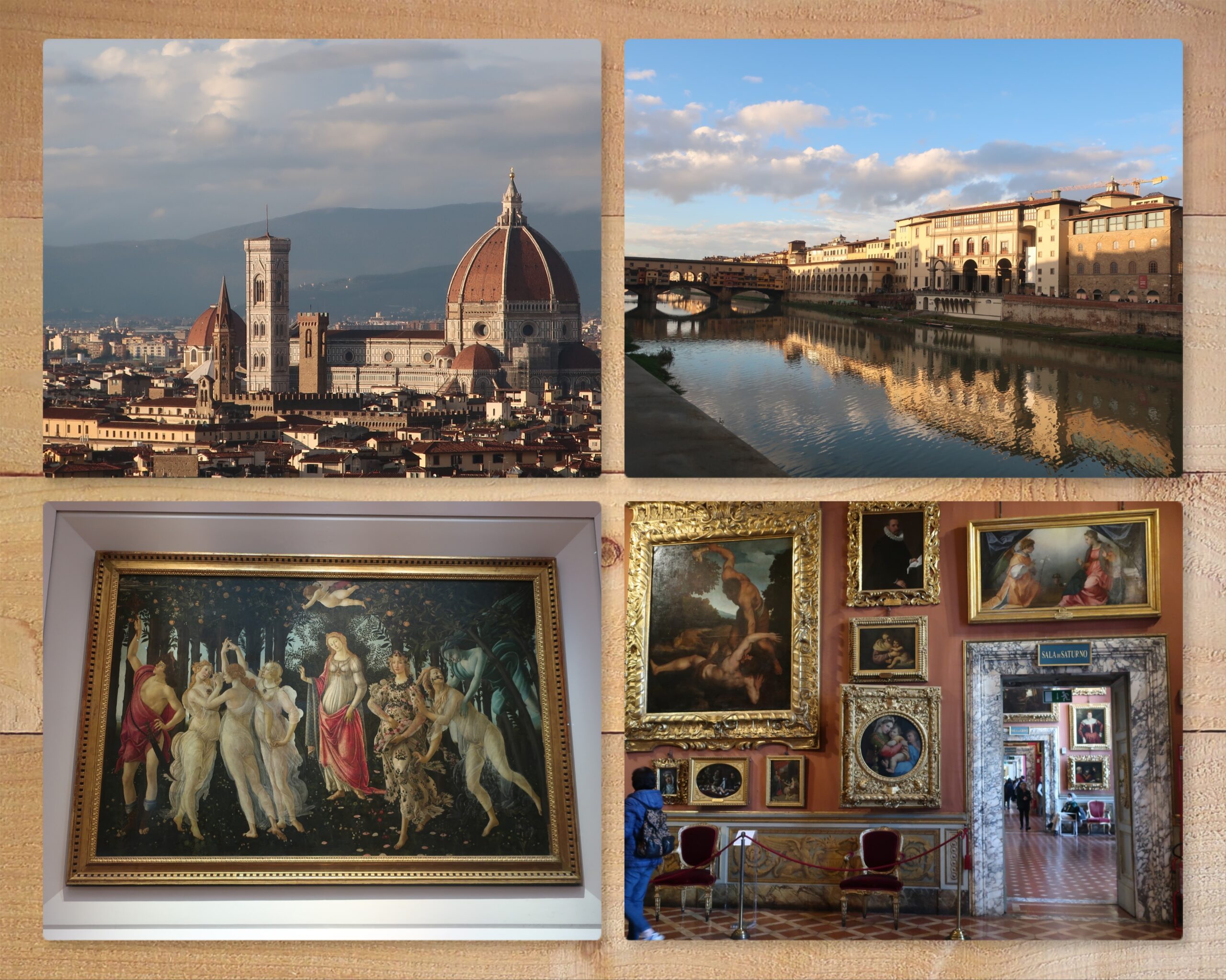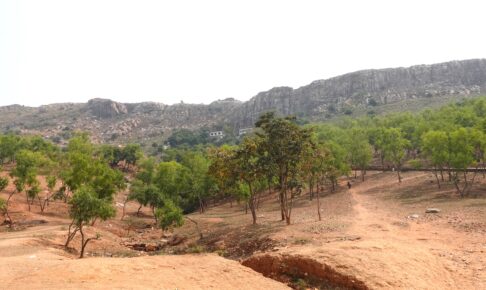Table of Contents
- 1 List of recommended reference books to learn about Florence - Italian Renaissance and the Revolution of Knowledge
- 2 Top 5 recommended reference books in Florence
- 3 Recommended books for a further taste of Florence
- 3.1 Masumi Ishinabe, The Florentine Century.
- 3.2 Kikuro Miyashita, Vermeer's Light and La Tour's Fire: A History of Western Paintings of "Darkness".
- 3.3 Koichi Motoki, "The Laughing Vermeer and the Smiling Mona Lisa: The Mystery of Laughter in the Masterpieces of Vermeer and Mona Lisa.
- 3.4 Takami Matsuda, "Purgatory and Hell: European Medieval Literature and the General Public's View of Life and Death" - recommended as a reference for Dante's Divine Comedy!
- 3.5 Dante, The Divine Comedy of Hell
- 3.6 Dante, The Divine Comedy, Purgatory.
- 3.7 Dante, The Divine Comedy, The Heavenly Psalm
- 3.8 Boccaccio "Decameron
- 3.9 Somerset Maugham, "Then and Now"
- 3.10 Machiavelli, The Monarchy.
- 3.11 Petrarch, The Renaissance Letters.
- 3.12 Petrarch, On Ignorance.
- 4 Conclusion
List of recommended reference books to learn about Florence - Italian Renaissance and the Revolution of Knowledge
In our previous article, we recommended reference books for learning about Rome, Italy, and in this article, we will recommend books about Florence.
Top 5 recommended reference books in Florence
Takashina ShujiThe Fate of Early Renaissance Art in Florence.
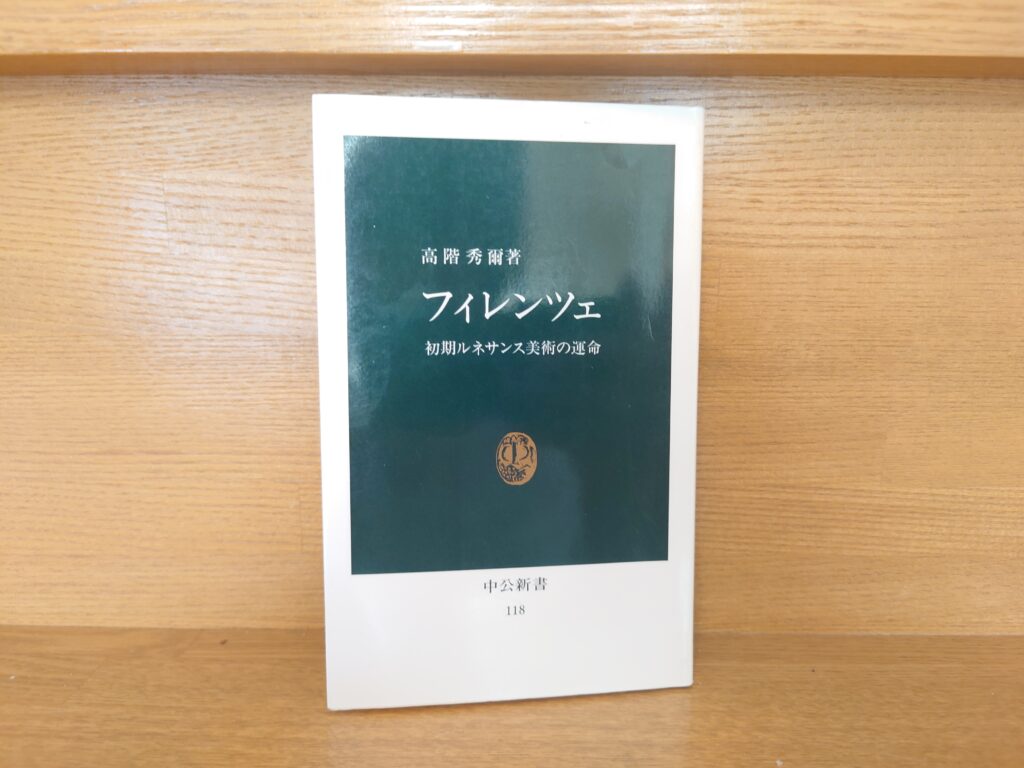
This book is highly recommended to learn about the history of Florence, the Medici family and Savonarola.
Ferenze is a city of flowers where the works of Botticelli, Leonardo da Vinci, Michelangelo, and other unspoken masters continue to fascinate people from all over the world.
However, it is surprisingly difficult to understand the history of Florence and how art flourished in this city.
Even though I knew the term "Renaissance art," when it came time to find out what this art actually was, what was the historical background that led to its golden age? For me, too, it was a subtle question that was both understandable and unknowable.
The key to this was the unique political system of the city of Florence, the rise of the Medici family, and the political situation in Italy.
In this book, you will learn more about the historical background and political conditions that led to the birth of the Renaissance. Florence is also associated with da Vinci, but although he himself grew up as an artist here, it was not in this city that he fully realized his talent. Why did he do so in another city and not in Florence? It also has to do with the political situation in the city and the temperament of the Florentines.
There is a lot of interesting history in this book, including the history of the Medici family, the subsequent war with France, and the religious dictatorship of Savonarola. In particular, I found it very interesting to learn that the republican system in Florence was not actually republican, and the military situation of the Italian states. This particular military situation was the reason why MachiavelliThe Monarchist.to be written.
I became interested in the Renaissance and Florence through da Vinci, and this has been a very interesting read that connects me to many things I have learned.
Kouji KuwakinoRenaissance: The Age of the Information Revolution.
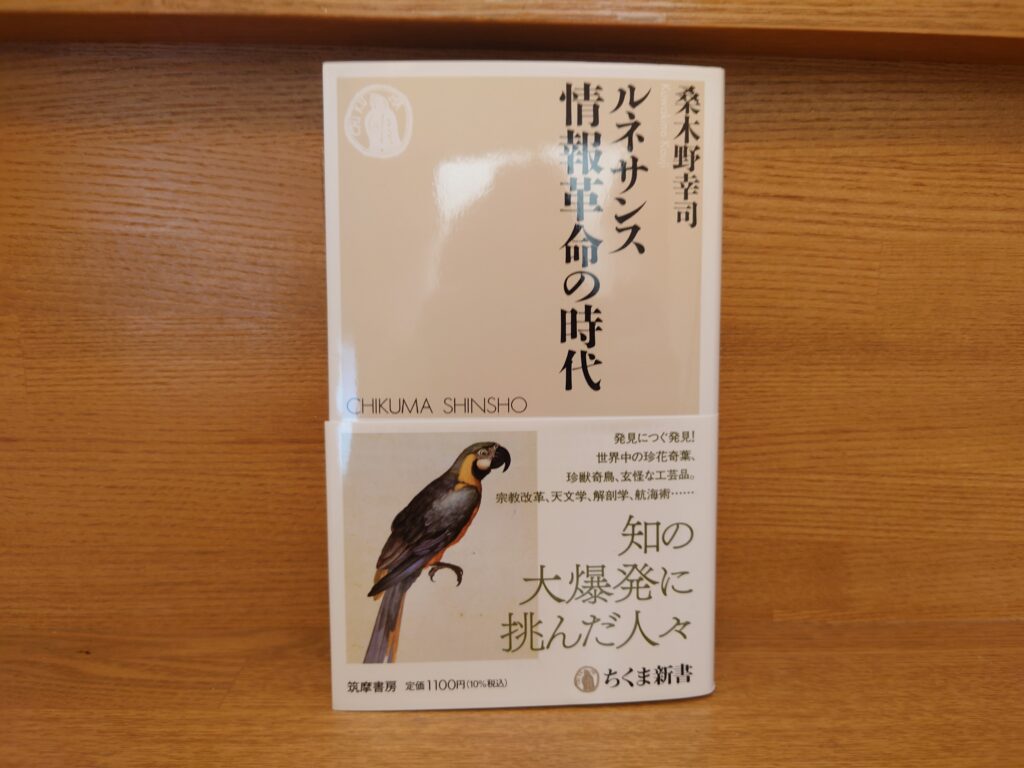
Let me say this first.
This book is extremely interesting! It is surprisingly stimulating.
I read this book because.A Revolution in Printing."The book was inspired by a book called
The art of letterpress printing was developed by Gutenberg around 1450. There is no doubt that this was a great invention that later changed the world.
However, the development of printing technology did not immediately lead to an explosion in people's intelligence, and printing itself struggled commercially for some time after its development.
What was going on among the intellectuals of this period, and when did the geniuses of the Renaissance begin to flourish? I became interested in such questions when I came across this book, "Renaissance: The Age of the Information Revolution.
In this book, I will discuss the Renaissance as a cultural movement/era from a slightly, or perhaps quite, different angle, by looking at the period from roughly the 15th to the early 17th century in Western Europe as a time of gradual development of the media revolution."
This book looks at the Renaissance, a period that is both understandable and difficult to understand, through the lens of the "media revolution.
I love books. As such a book lover, it was the most exciting and thrilling experience for me to learn how books have changed the world.
This is interesting.
I highly recommend this great book to anyone who is interested in the Renaissance and loves books! It is extremely interesting!
This is a work that will spark your intellectual curiosity! Why not pick up a copy?
Tsunekazu KondoPetrarch: Life and Literature.
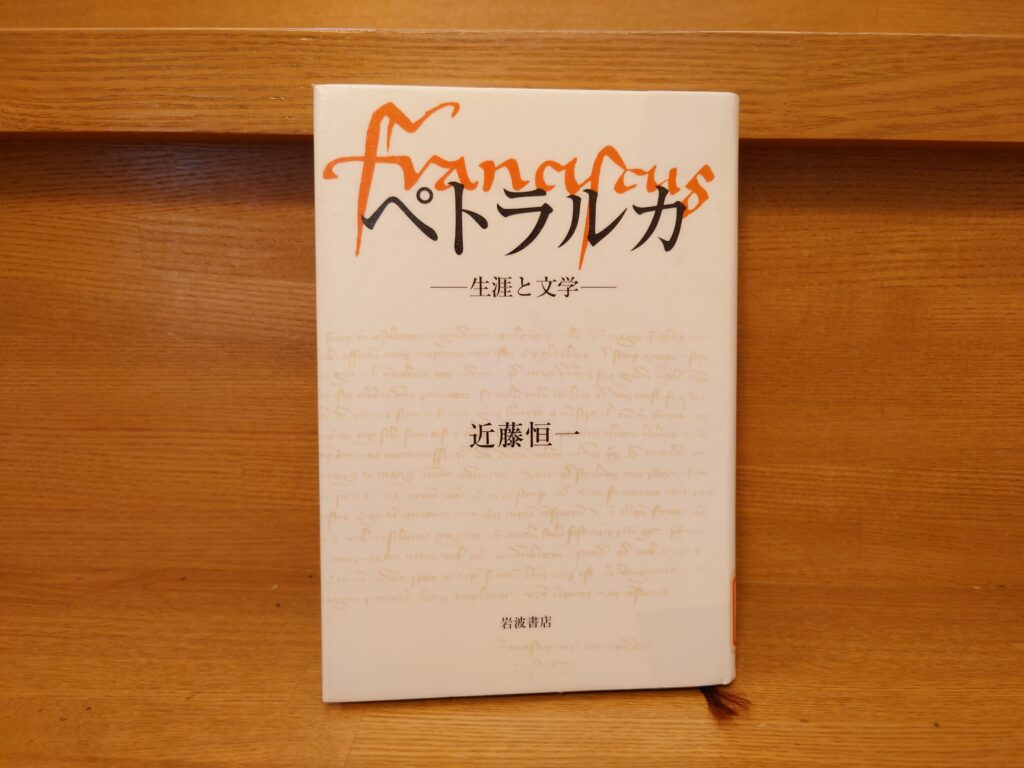
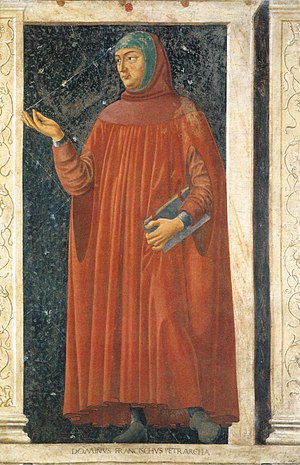
Petrarch, the charismatic author of the book.
This is a very interesting man.
The book "Petrarch - Life and Literature" by Tsunekazu Kondo is one of the best books to learn about Petrarch's life and thoughts.
In this piece, we follow Petrarch's life and look at his ideas and characteristics, which is just fascinating!
Petrarch himself is interesting, but the author's narrative is also excellent!
The background of the times and what Petrarch was seeking and suffering from are explained very clearly.
This will give you an idea of the flow of the Renaissance, and most importantly, it will make you want to read Petrarch's works!
What also surprised me the most was thatThe Decameron.It was a relationship with Boccaccio, famous for his
Petrarch and Boccaccio were allies in pioneering Renaissance literature. This was a surprise to me. The Decameron" is a well-known work, but I never thought it would be connected to Petrarch...
Boccaccio was nine years younger than Petrarch. Italy in the mid-1300s was not a marked period for me, but this is very interesting.
Maurizio ViroliThe Life of Machiavelli: The Mystery of His Smile.

Readers will be able to relive the times in which he lived, picturing in their minds the days that Machiavelli spent."
This is exactly what it is. This biography will follow Machiavelli's life and what he was fighting against in a very realistic way.
I was amazed when I read this book. I was shocked to find out that Machiavelli had been through all of this! I was shocked. I had no idea that he was disgraced, suspected of treason, and even tortured by his beloved city of Florence.
He then shut himself up in the countryside and faced the book, from which he created "The Theory of Monarchs" in light of his own experience as a diplomat. I was numb to this process. In addition, this biography gives a clear explanation of what was groundbreaking about "The Monarchist". This was also very gratifying.
Machiavelli may have a bad image of "Machiavellianism," which is the word for "Machiavellianism," a "Machiavellianism of all things.
But this biography will surely change that image. It tells a shocking story.
I would highly recommend this work.
Walter IsaacsonLeonardo da Vinci."

The book is unique in that it depicts da Vinci's life based on the notebooks he left behind.
Another thing, which is also a major characteristic of this book, is that the author does not portray da Vinci as a "great genius" but only as a "human" da Vinci.
The label of "genius" gives the impression that Leonardo was simply blessed with above-average talent, which in turn demeans him.
Leonardo's extraordinary talent was not a gift from God. It is the product of his own will and ambition."
His talents are something that ordinary people can understand and learn from. For example, we can develop our own curiosity and powers of observation if we make the effort. Leonardo was moved by the smallest things, and he expanded the wings of his imagination. We can all consciously try to do so, and we can all help our children develop these qualities."
The author will tell the story of Leonardo da Vinci's life from this perspective.
It is true that da Vinci possessed some sort of enormous talent. But that doesn't mean we are missing out on something important if we dismiss him as an overwhelmingly superhuman figure. We can learn from da Vinci. We can learn from him. That is what the author will talk about in this book.
I appreciated this work very much in learning about da Vinci's life. It is very easy to read and explains da Vinci's footsteps and characteristics very clearly.
Recommended books for a further taste of Florence
Masumi IshinabeThe Florentine Century.
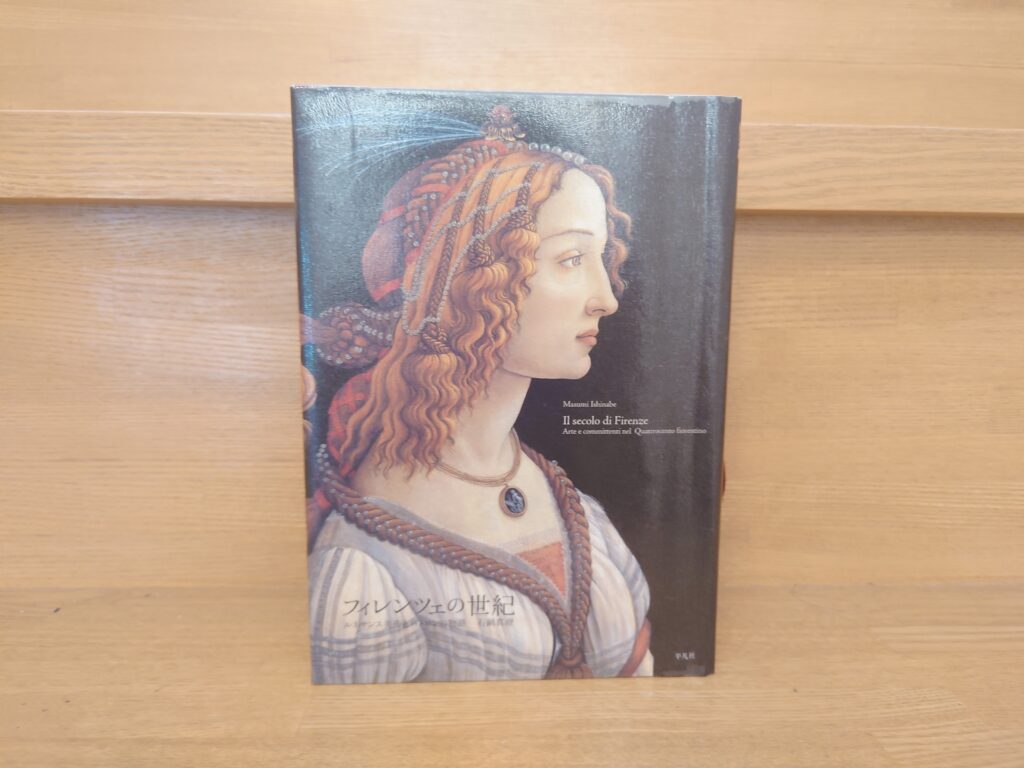
This work is unique in that it focuses on the historical context in which the work was created rather than the artwork itself.
As the author states, "The bulk of this book is the story of the elite citizens, led by Cosimo de' Medici." As the author states, "This work is a straightforward way to learn about the elite that made up the republican state of Florence, especially the Medici family and their connection to art.
Moreover, I appreciated this work because it allowed me to see the flow of the Florentine history in chronological order, starting with pre-Medici Florence.
Florence has so much famous architecture and works of art that it can be confusing to know what to look for. However, this book will clear your mind as you will see them in chronological order. The book will help you see Florence differently from what you have seen only vaguely in books and videos, because you can see the historical flow of the city as a set.
It was also very interesting to learn about the history of the famous Duomo of Florence and the secret of its greatness.
From there, the book discusses the dynamism of the artists who led the Renaissance in the 15th century, the politics of Cosimo, Piero, and Lorenzo, the heads of the Medici family, and their relationship with art. Masumi Ishinabe's book is easy to read and understand. Moreover, they take us to a deeper level. It is great to be able to enjoy such a guide to Florence.
This book will definitely make you more interested in Florence. And your desire to see Florence in person will grow stronger and stronger.
Kikuro MiyashitaVermeer's Light and La Tour's Fire: A History of Western Painting in the Dark.
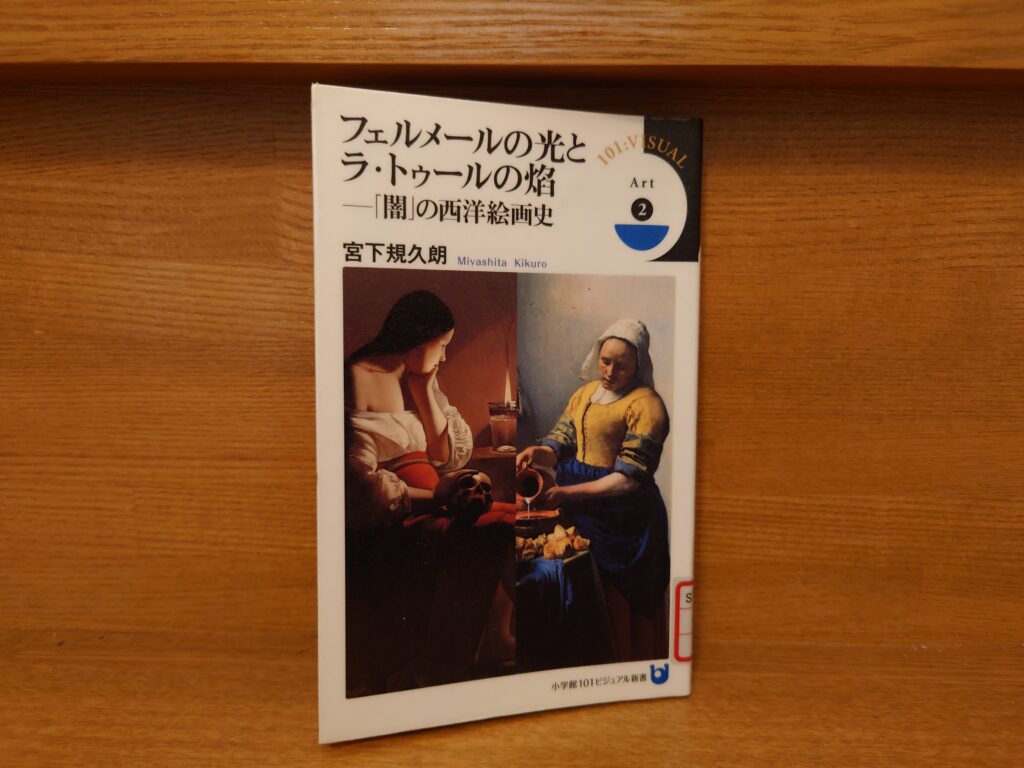
As the title of this work suggests, this work considers how the beautiful paintings of Vermeer, the painter of light, were created, using "darkness" as a starting point.
And the other major figure in the book is La Tour (1593-1652), a French painter and master known as the "painter of the night."
Vermeer painted beautiful light shining through a window. La Tour, on the other hand, depicted a candlelight that illuminated the darkness.
The contrast between the two is interesting in itself.
What is even more interesting is that this exploration of "light and darkness" led to Leonardo da Vinci.
In the past, "darkness" was never depicted in Western paintings. The book introduced "The Angel's News to the Shepherds" by Italian painter Taddeo Gaddi (ca. 1300-1366) as the first work in which a great darkness is depicted.
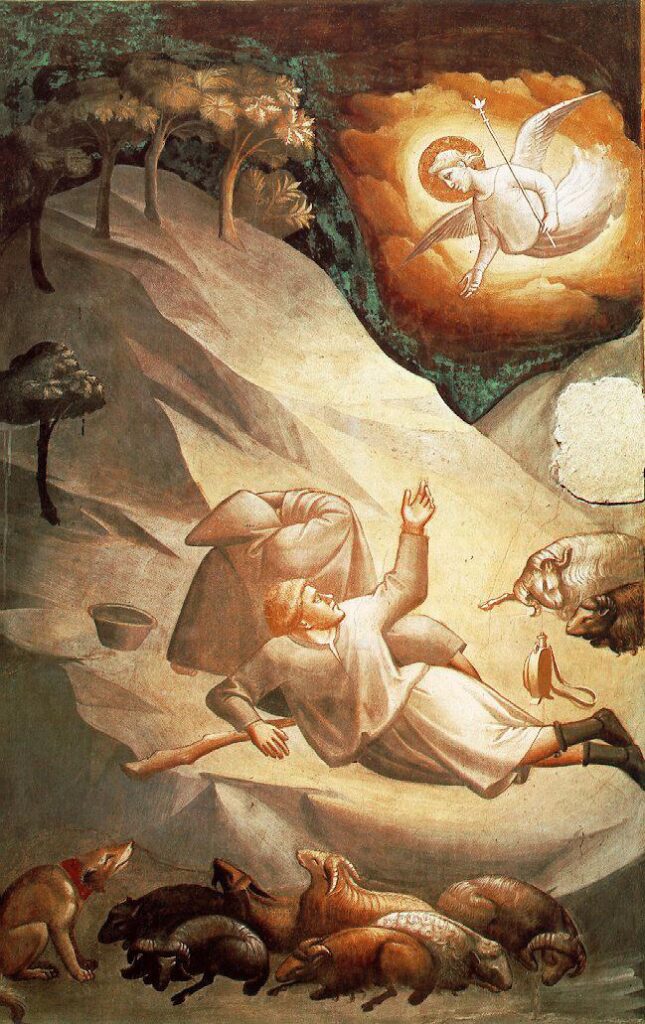
Then, about 150 years later, the genius Leonardo da Vinci (1452-1519) appeared.
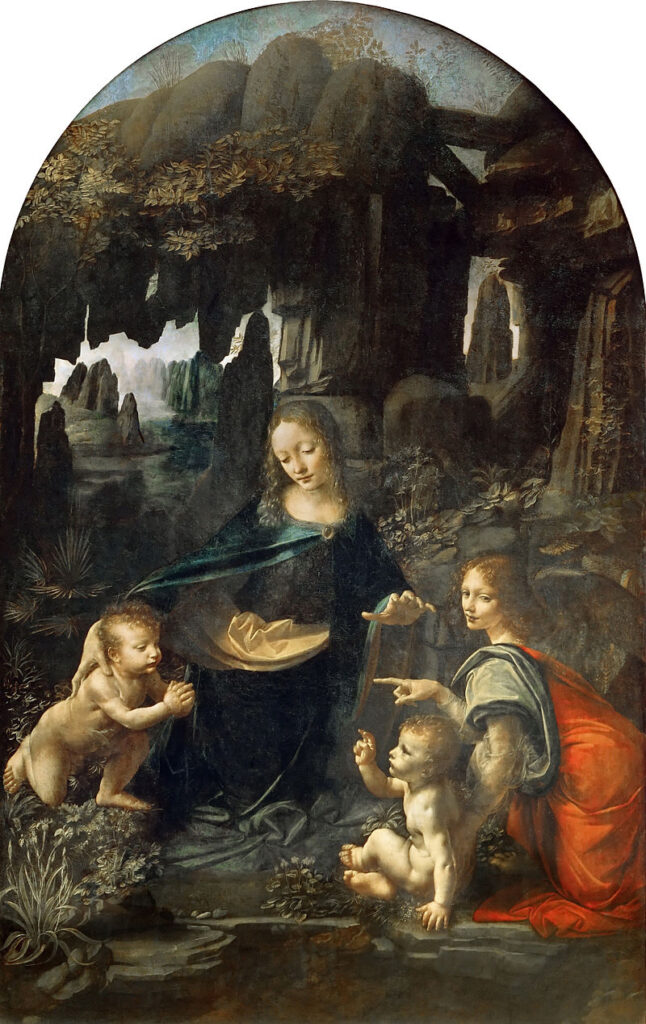
This famous painting is in the collection of the Louvre, and in fact, it was this work that had a huge impact on the history of painting. In this book, you will hear a stimulating lecture about "light and darkness" in such paintings. This is interesting.
Koichi MotokiThe Laughing Vermeer and the Smiling Mona Lisa: The Mystery of Laughter in the Masterpieces."
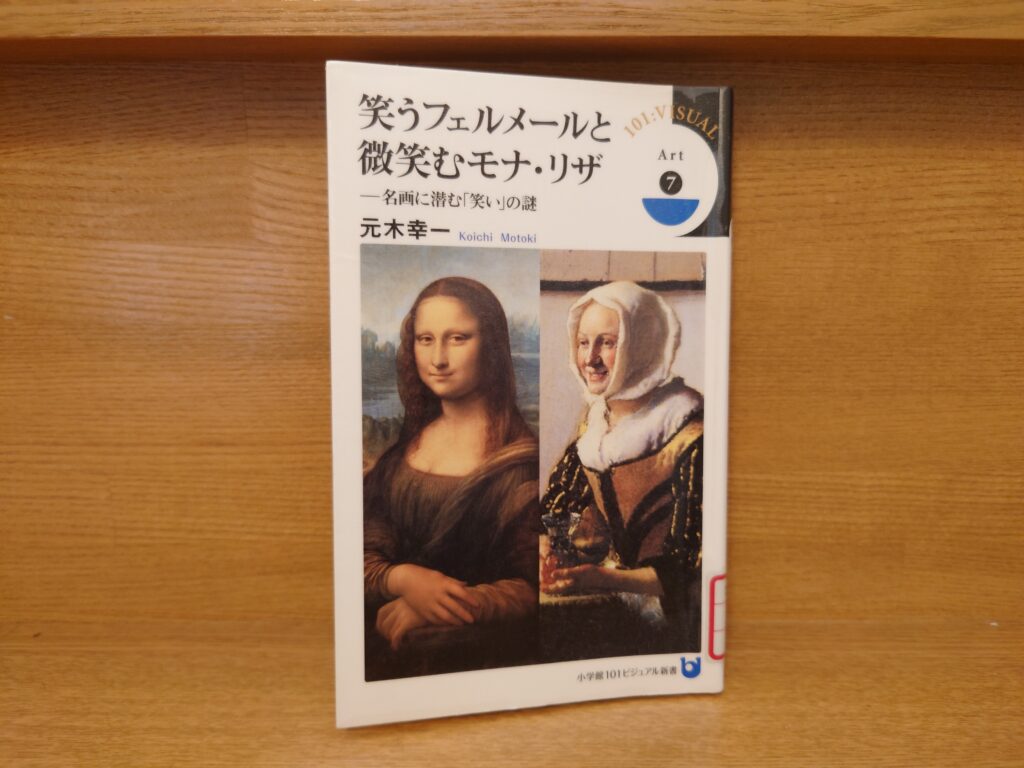
As the title suggests, the book is an exploration of the hidden meaning of the smile in the history of painting, using the smiles of Vermeer and the Mona Lisa as its subject matter.
The meaning of both sides of a smile in a Christian painting. This is something that is difficult to recognize just by looking at a painting, but once you know it, your view of it will be transformed.
So what is the significance of the smiles of Vermeer and the Mona Lisa, the main theme of this book? I hope you will read this book. It was a very interesting book. I highly recommend this work.
Takami MatsudaPurgatory and Hell: European Medieval Literature and the General Congregation's View of Life and Death."~Recommended as a reference for Dante's Divine Comedy!
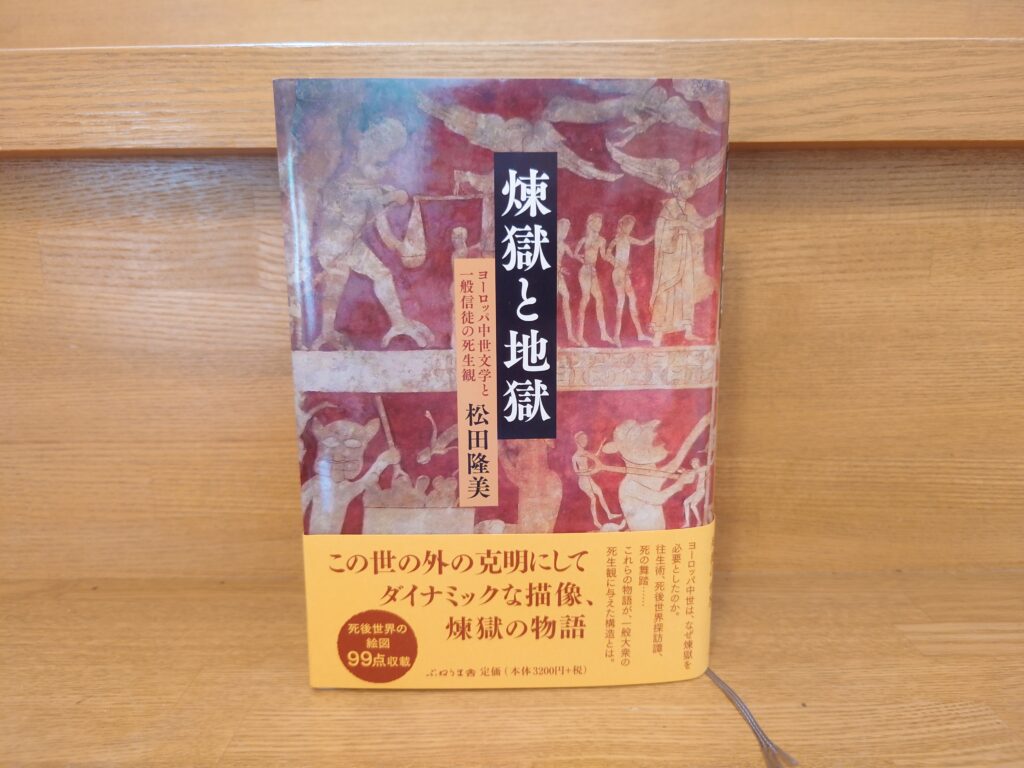
I picked up this book because of Dante'sThe Divine Comedy, Purgatory Arc.was the catalyst.
I read "The Divine Comedy: Purgatory" for the first time in 10 years. When I read it for the first time, I did not have much knowledge of Christianity, and I read it without much doubt about Purgatory. Now that I have relearned about Christianity through Dostoevsky, I have begun to wonder, "What exactly is purgatory?
Purgatory is not mentioned in the Bible. But it has been very important in the Catholic world.
When was this purgatory born? What was the background of the story of Purgatory? And how did it spread among people?
I wanted to know about them and I picked up this book.
The book gives a very clear explanation of why purgatory was created in the historical background.
Ideas do not just appear out of thin air. In this book, we can feel that ideas are born only when they are needed in the context of the times.
The book tells us that purgatory came into being around the 12th century.
And Dante wrote The Divine Comedy in the early 14th century, a span of about 200 years. During this period, purgatory was spoken of in various forms, not only by Dante.
The book also talks about hell and heaven as well as purgatory.
Therefore, it covers all of Dante's "Inferno," "Purgatory," and "Heaven. Although it does not directly discuss Dante's "Divine Comedy," it does give an idea of what Dante was referring to when he created his work.
Dante.The Divine Comedy: The Inferno
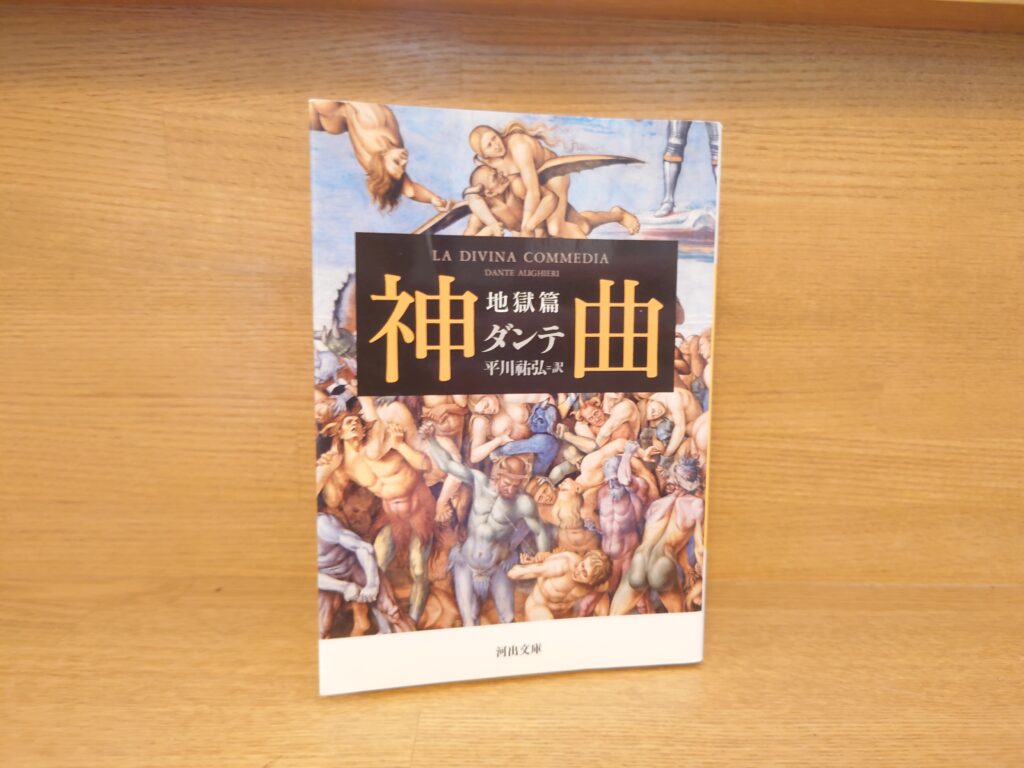
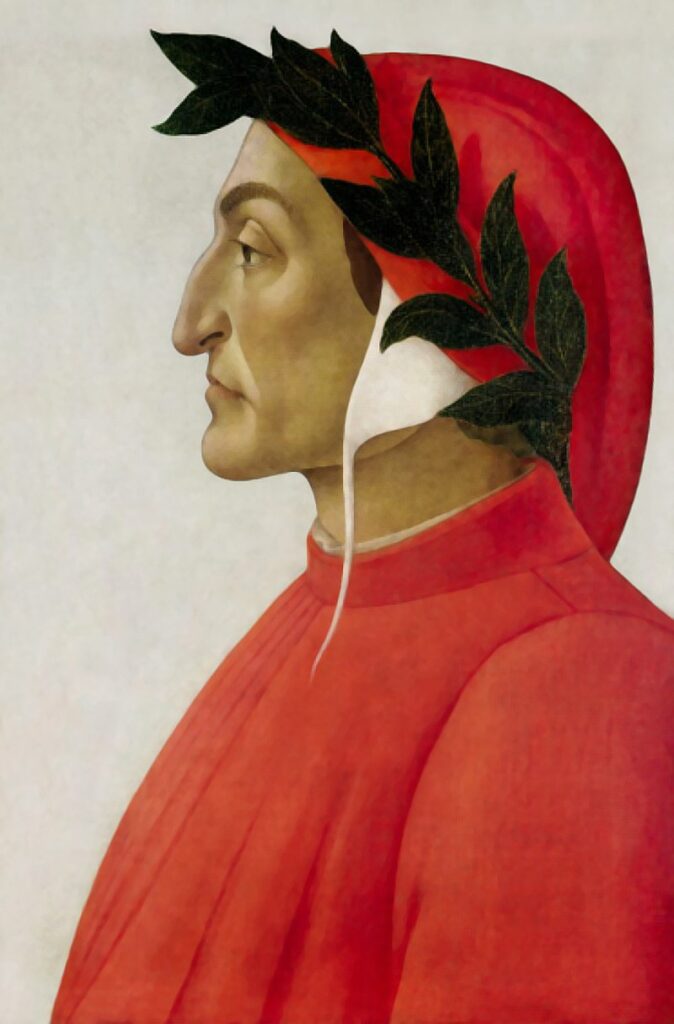
The Divine Comedy is a classic that everyone knows the name of. However, it is surprisingly difficult to know when this work was written and what kind of person Dante was when he wrote it.
So before we get down to business, here is a brief profile of Dante.
Born in Florence, Tuscany in 1265. Italian poet. He was deeply involved in political activities, but in 1302, he was involved in a political upheaval and was permanently exiled from his homeland. He spent the rest of his life as a wanderer. Died in 1321.
Kawade Shobo Shinsha, Dante, translated by Yukihiro Hirakawa, from "The Divine Comedy in Hell
Dante would be of a generation slightly before Petrarch (1304-1374) and Boccaccio (1313-1375), the leading figures of Italian Renaissance literature.
We were first surprised to learn that he was born in Florence, but we were also surprised to learn that he was exiled because he was involved in a political dispute. The "Divine Comedy," which I will introduce here, was written out of his various feelings about this exile. The work looks different when you consider that his feelings for his homeland, power struggles, and resentment toward injustice were the driving forces behind this work.
Now, in this "Divine Comedy," the main character is Dante himself. The main plot is that Dante travels through hell, purgatory, and heaven.
In The Divine Comedy, hell is depicted in a hierarchical manner. The lower the hierarchy, the more serious the sins, and the more severe the torments of hell.
Basically, the pattern of hell's torment is to inflict physical pain on the body by physical means. Being roasted by fire also appears a lot in "The Inferno".
But what is surprising about this work is that there are punishments that are sometimes humorous.
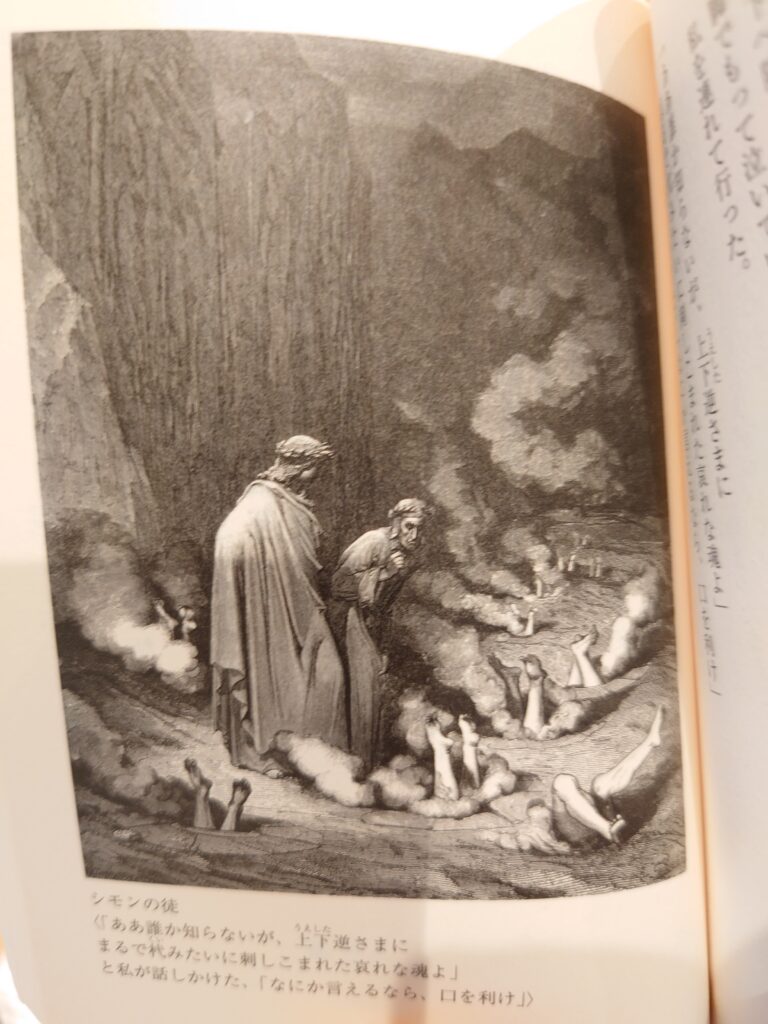
This is the eighthcirqueThe third of thetrenchThe picture is a "Pentecostal" scene, but here sinners are being punished for the sale of sacramental goods. They are buried upside down in a hole, and their feet are burned by the flames.
It is true that being buried upside down in a hole and having one's legs burned endlessly would be an unimaginably painful ordeal. However, there is something about this story that does not evoke a sense of fear. The illustrations may be a major factor, but there is also a sense of humor or irony in the text. Perhaps Dante was trying to express his anger and ridicule toward the sinners who have violated the priesthood.
Other strange torments are recounted in "The Divine Comedy," but what struck me most about this work was its depiction of the lowest levels of hell.
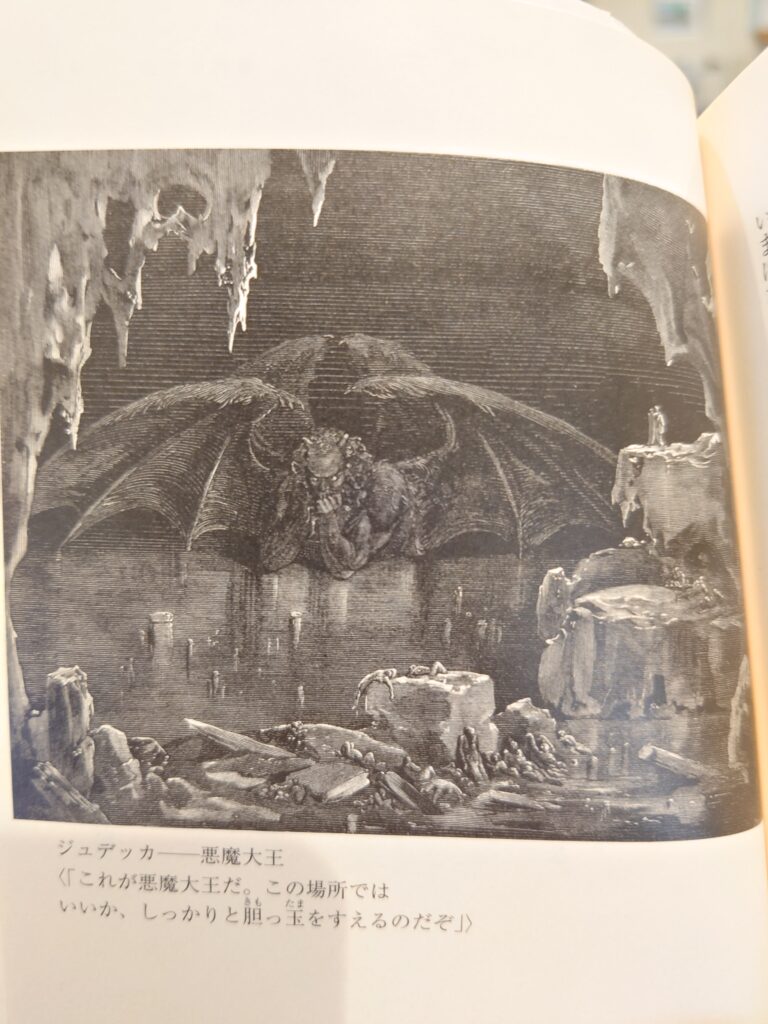
This is the lowest level of this hell where the Great Demon King is waiting for you, but what a surprise! This place is an icy world!
From our image of hell, we have an image of burning flames, don't we?
But in "The Divine Comedy" it is different. This is a world of ice, and sinners are suffering from being frozen all over.
I first read "The Divine Comedy" when I was a junior in college. That was more than 10 years ago. But I still cannot forget the shock I felt when I first saw the icy world of the lowest level of this hell.
The bottom of Christianity's hell is a world of ice! It's the exact opposite of Buddhism!" I was astonished.
The lowest level of hell in Buddhism is called Muma Jigoku (Abhidharma Hell), which, as the name implies, brings "suffering without pause. It is a place of unimaginable scorching heat that burns for what seems like an eternity. This is Muma-Jigoku.
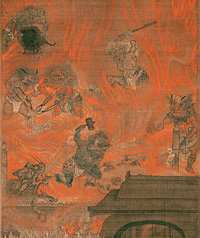
In Buddhism, there are eight major hells, where one is subjected to increasingly severe torture depending on the severity of one's sins. The scorching fire from the first of these hells is one of the greatest torments, and the lower you go down the hell, the more tremendous the fire power becomes.
So when I first started reading "The Divine Comedy," I thought the first half was similar to Buddhism. But at the end of the book, I was surprised to see a cold, extremely cold world.
Dante.The Divine Comedy, Purgatory Arc.
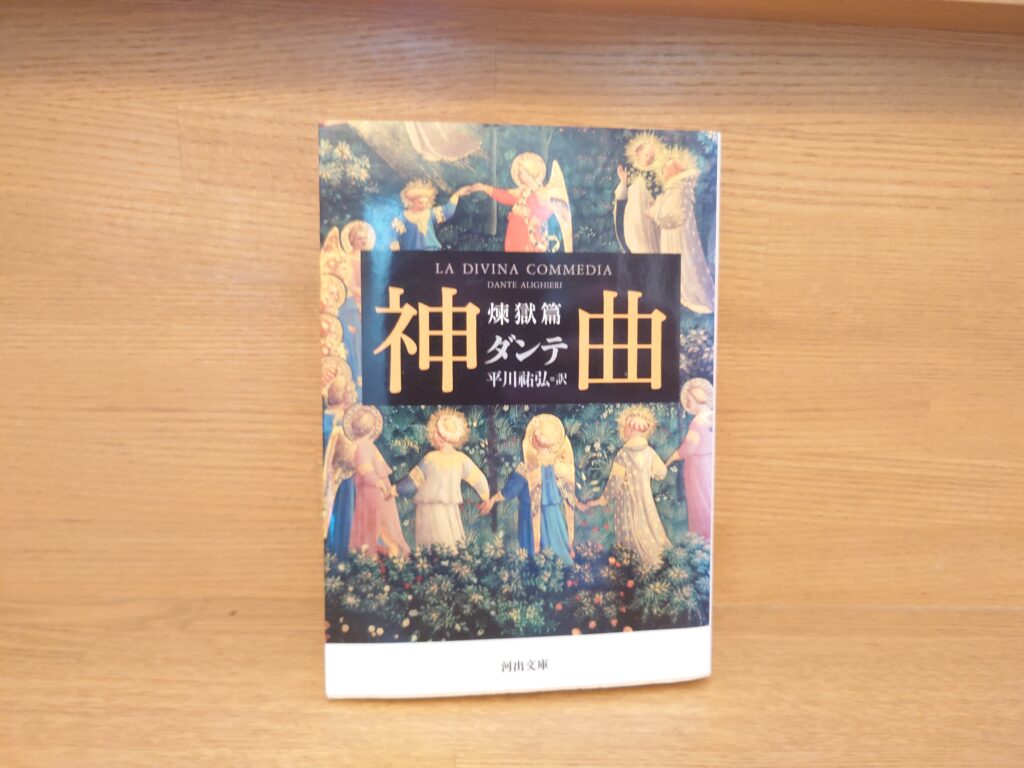
Dante, who toured Hell with his guide Vergilius in the previous work, "Inferno," will now tour a place called Purgatory.
Purgatory is neither heaven nor hell, but a place in between, so to speak. Purgatory was a place to purify oneself before entering heaven.
As I mentioned above, I first read The Divine Comedy more than 10 years ago. At that time, I had little knowledge of Christianity, so I remember reading it without any particular questions about purgatory.
However, I have come to realize once again that this work was born in very close connection with the historical background of Dante's life. For more details, please read the reference book "Purgatory and Hell: European Medieval Literature and the View of Life and Death among the Lay Faithful," which I introduced above.
Dante.The Divine Comedy: The Heavenly Arc
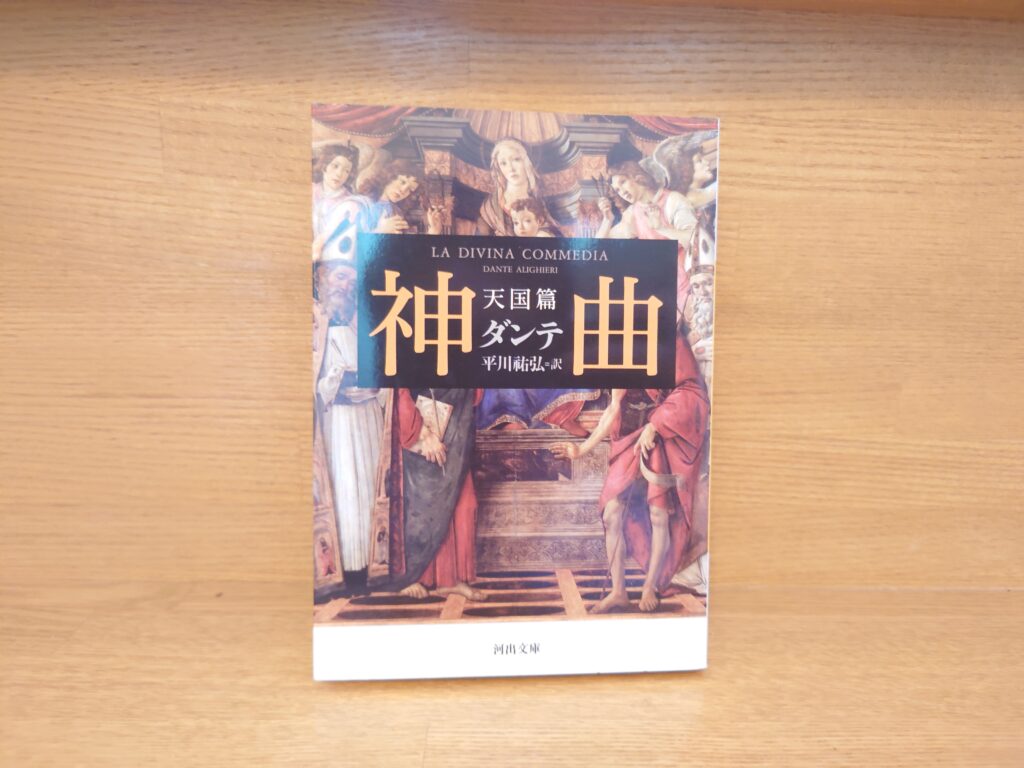
Dante, the author and main character, is aThe Inferno.In the "Purgatory Arc," Dante travels to a place called Purgatory with his guide, Vergilius. In the "Heavenly Arc," Dante finally heads for heaven.
Heaven is a world of light, unlike the present world in which we live. And there are noble people and angels there. And they will appear to Dante in flocks.
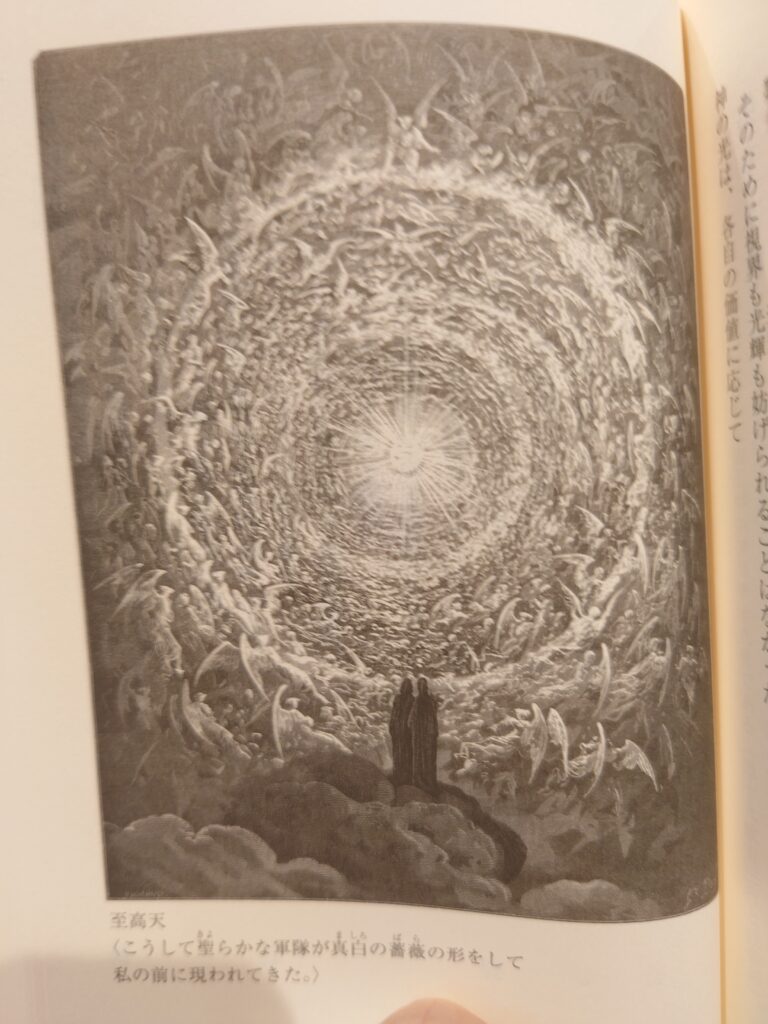
It is in this heaven that countless angels and inhabitants of heaven are thus lined up and chanting praises to God.
The inhabitants of heaven were living in the great heaven praising God. Dante, too, could only marvel at the overwhelming spectacle in this work.
...but what about us, the readers of this piece?
I must confess that I found the Heaven Psalm difficult to read.
It would be extremely rude to say this about one of the greatest classics of Western literature, but it seems to me that Dante's work becomes less and less interesting as we move on from "Inferno," "Purgatory," and "Heaven. The first one, "Inferno," is the most interesting, and Dante's writing seems to be the most vivid.
The inhabitants of heaven just keep praising God in a group. The fact that the description of heaven is quite repetitive may be a major factor, and it may also be that it is difficult for us, who have all the troubles of life, to understand or even yearn for heaven.
I first read "The Heavenly Arc" when I was a junior in college, that is, more than 10 years ago. At that time, I still remember that my biggest feeling was "Heaven doesn't look so fun....
However, this issue was not only an irreverent one for me, but also an important one in the view of life and death at that time.
Please refer to the following article for more details.
boccaccioThe Decameron.

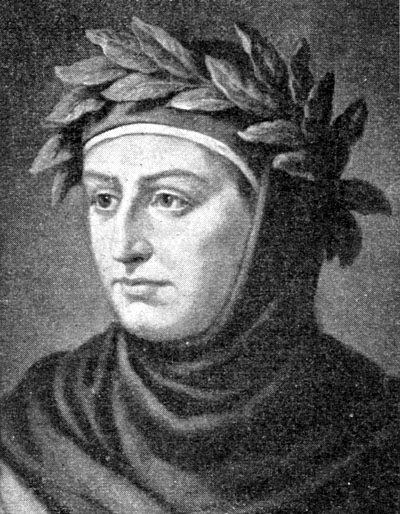
Boccaccio was a leading literary figure of the Italian Renaissance.
by Tsunekazu Kondo, also introduced above.Petrarch: Life and Literature.The most surprising thing about the relationship between Petrarch and Boccaccio was the relationship between Petrarch and Boccaccio.
Petrarch and Boccaccio were allies in pioneering Renaissance literature. This was a surprise to me. The Decameron" is a well-known work, but I never thought it would be connected to Petrarch...
Boccaccio was nine years younger than Petrarch. Italy in the mid-1300s was not a marked period for me, but I found this very interesting.
I think I first read "The Decameron" when I was a junior in college. That was more than 10 years ago. At the time, I read the book with very little knowledge of Western history, so I honestly doubt that I was able to properly understand the book.
But even so, I still remember vividly that I read this work. It must have had such a strong impact on me.
The Decameron" opens with the harrowing plague and its aftermath, which is a bit of a shock to the audience. Then, elegant young men and women flee to the suburbs, where the story is told.
Just when you thought you had a sinking feeling at the opening, now that miserable atmosphere goes away.
The stories they tell are light and lighthearted, with no hint of the plague disaster. The stories are lighthearted and light-hearted, with no hint of the plague. The young people cheer them on, and the work progresses in a cheerful atmosphere.
I remember thinking at the time, "How can you be talking like this at this ridiculous time of the plague?"
The city of Florence has become a hell of death and destruction, and these rich young people are so carefree."
I remember feeling unconvinced by their behavior, which could even be called irresponsible in a sense.
But now, re-reading it more than 10 years after I first read it, I have very different feelings about it than I did then.
Somerset Maugham.Then and now."
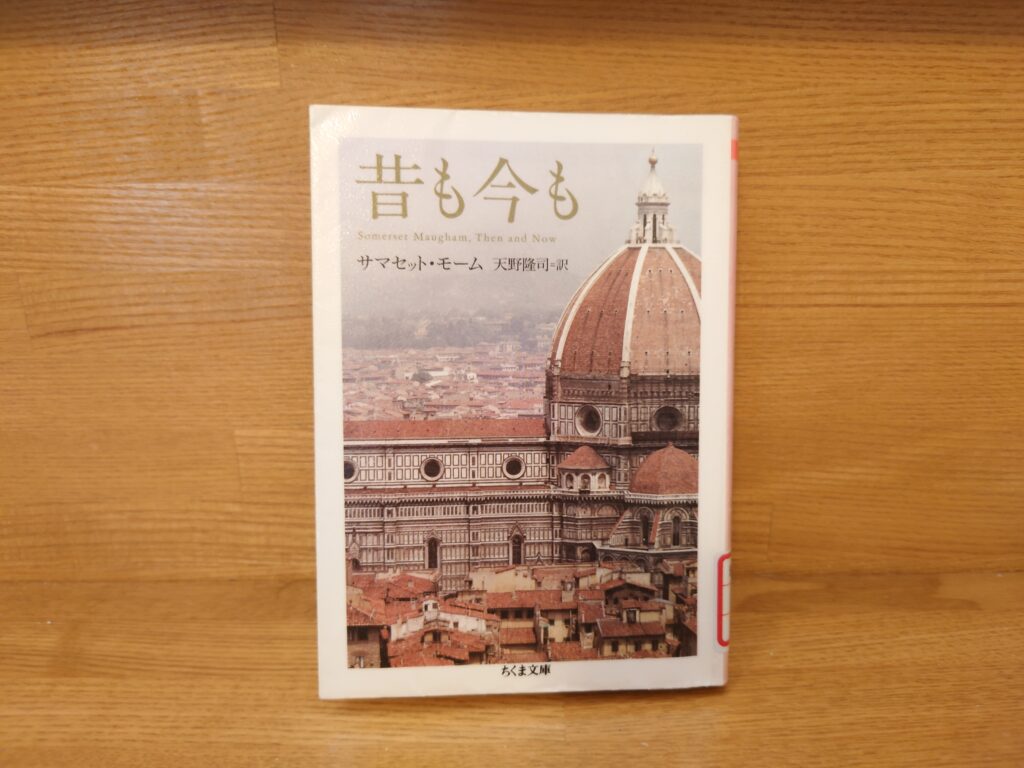
I read this work by Takashina Shuji, mentioned above.The Fate of Early Renaissance Art in Florence.was the catalyst.
The book gave me an insight into the political situation in Florence at the height of the Renaissance in the 15th century, as well as the historical background of Italy as a whole.
I was surprised to learn that the prosperity of Renaissance art was greatly influenced by the unique political situation in Italy, and that Leonardo da Vinci and Michelangelo were used precisely as tools for political gamesmanship between countries.
And it was Machiavelli, famous for his "The Theory of the Monarch," who lived at that very same time.
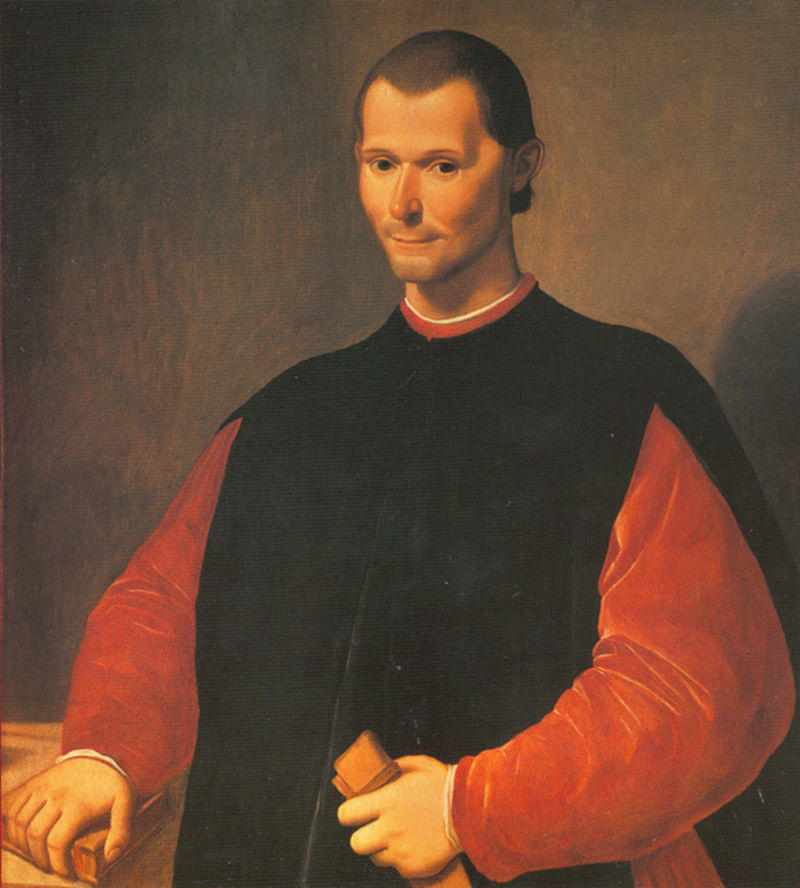
The book itself is quite difficult to read and is a tough read. I tried to read this book before, but I failed in the first half of the book and left it behind.
But when I read "The Monarchy" again after reading this "The Fate of Florentine Early Renaissance Art," it showed a completely different face! It's just so interesting! After understanding the background of the period, Machiavelli's words came to make sense to me.
This made me curious about Cesare Borgia, the man who also served as the model for "The Monarchist," and I couldn't help but become curious. He must have been a huge man, since he was the model for "The Theory of Monarchs," a book that has swept the world. I was eager to learn more about him, and as a result of my search for a book, I came across this book, "Then and Now.
Before I go any further, let me say that I enjoyed this book immensely! It is a superb historical novel! This is a great book I found!
Two geniuses, Machiavelli and Cesare Borgia, weave an intense human drama! You can also learn about the historical background of Italy in which they lived. In the dramatic storyline, there are quotes reminiscent of "The Theory of Monarchs," and we also get to know the human side of Machiavelli.
Once Upon a Time and Now is a superb historical novel in its own right, but I would also highly recommend it as a guide to "Monarchism". It was a very interesting work. It is also very helpful in understanding the historical background of the Renaissance. I highly recommend you to pick up a copy.
MachiavelliThe Monarchist.
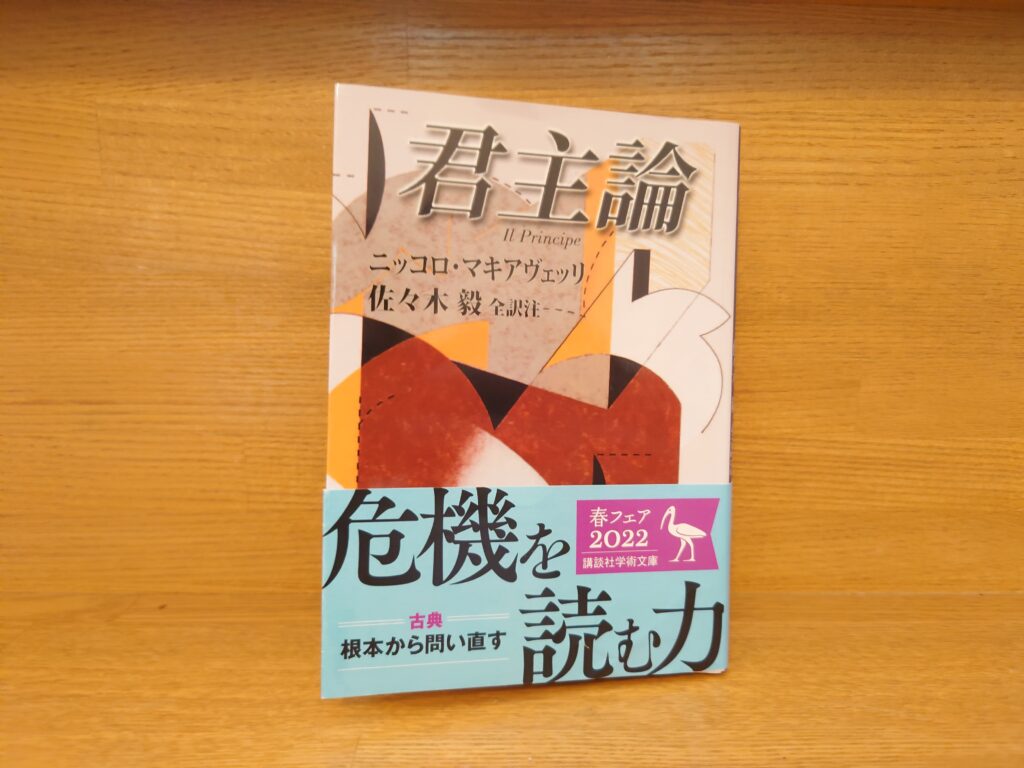
Although "Monarchism" is so well-known that the term Machiavellianism is used to describe it, the book itself is quite difficult to read and a formidable work.
Perhaps most of the world reads the famous "The Theory of Monarchs" by itself. I did, too.
I wonder what kind of book the famous "The Monarchist" is. It seems to be a bestseller, so let's give it a try."
I have bitter memories of picking it up with such a light heart, but as expected, I failed.
But the previous article, by Takashina ShujiThe Fate of Early Renaissance Art in Florence.When I read "The Monarchist" again after reading "The Monarchist", it showed a completely different face! It was just so interesting! When I read it after understanding the historical background, Machiavelli's words came to me more easily.
Now, let me give you some pointers on how to read this book.
I read the Kodansha edition, 31st printing in 2022, and I recommend this one anyway. I recommend this one anyway because, first of all, this book is a "capitalized" edition, which means that the text is simply easy to read. I think it is very important to have easy-to-read text. I think there are many people, especially in the case of classic works such as this, who are turned off by the small letters. I am sure there are many people who are annoyed by small letters, especially in such a classic work. I am one of them. It takes a lot of determination to start reading. In this respect, I am very grateful for this "capitalized" edition.
In addition, there is a "Foreword" by the translator at the beginning of this book, in which he explains the historical background and key points in reading this book. This is also easy to understand and will be a great help in reading through "Monarchism," which tends to be frustrating.
And as for "Monarchism" itself, to be honest, the first half of the book is not very interesting. The contents are hard to grasp, and the reading continues to be painful. However, after enduring it, you will reach the middle part of the book, which is about the sixth chapter, and it becomes interesting all at once. So, please bear with the first half of the book. If it is too hard for you, you can skip reading. Once you get to the middle part of the book, it becomes easier to read at once. It becomes so interesting that you may think it is a different work.
I am one of the people who had been frustrated with "Monarchism" in the past, but I stumbled in the first half of the book and was completely unaware of the development from the middle section. If I had been able to reach the middle part of the book at that time, I might have been able to finish it without falling behind. The development from the middle part is that interesting, so please look forward to it.
And again, before reading "Monarchism", please read the book by Takashina Shuji.Florence.and by Somerset Maugham.Then and now."I hope that you will read "The Monarchist". If you read these two works, you will understand that "Monarchism" is a tremendously meaningful and interesting work. I definitely recommend it.
Leonardo da Vinci and Michelangelo were indeed contemporaries of Machiavelli. These artists were also valued as powerful tools of politicians. By W. Isaacson, mentioned above.Leonardo da Vinci."But the model for "The Monarchist", Cesare Borgia, was mentioned.
It was very interesting to think that da Vinci and Michelangelo also lived in close relation to these political situations.
PetrarchThe Renaissance Letters.
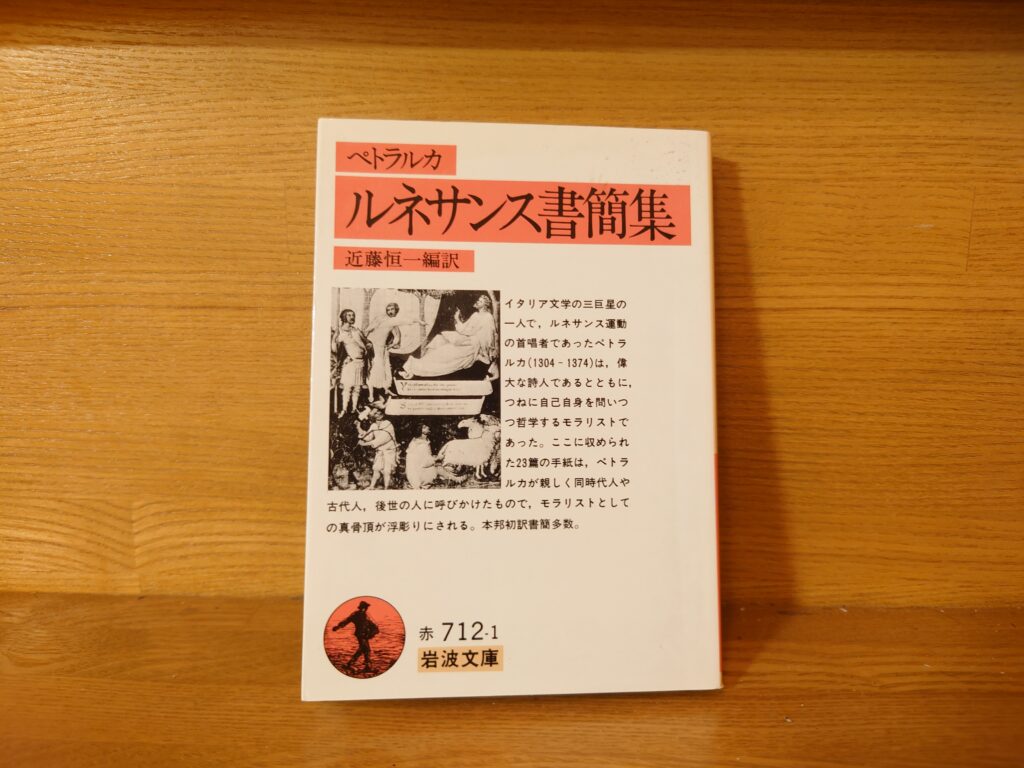
I picked up this book by Koji Kuwakino, mentioned above.Renaissance: The Age of the Information Revolution.was the catalyst.
I was very interested in the part of the book that describes Petrarch, the man who started the Italian Renaissance, and I was very interested in learning more about him.

At the time, there was a trend to regard ancient philosophers such as Cicero and Aristotle as deities and to revere them as absolute beings. Petrarch, however, dares to see these philosophers as human beings just like us. Petrarch's unrelenting sarcasm toward Cicero, on the other hand, is a reflection of his love for them. We can sense his desire to treat Cicero as a human being whom he respects, rather than to worship him as a god.
We hope you will find Petrarch's humorous letters in the following article to be unintentionally funny.
PetrarchOn Ignorance."
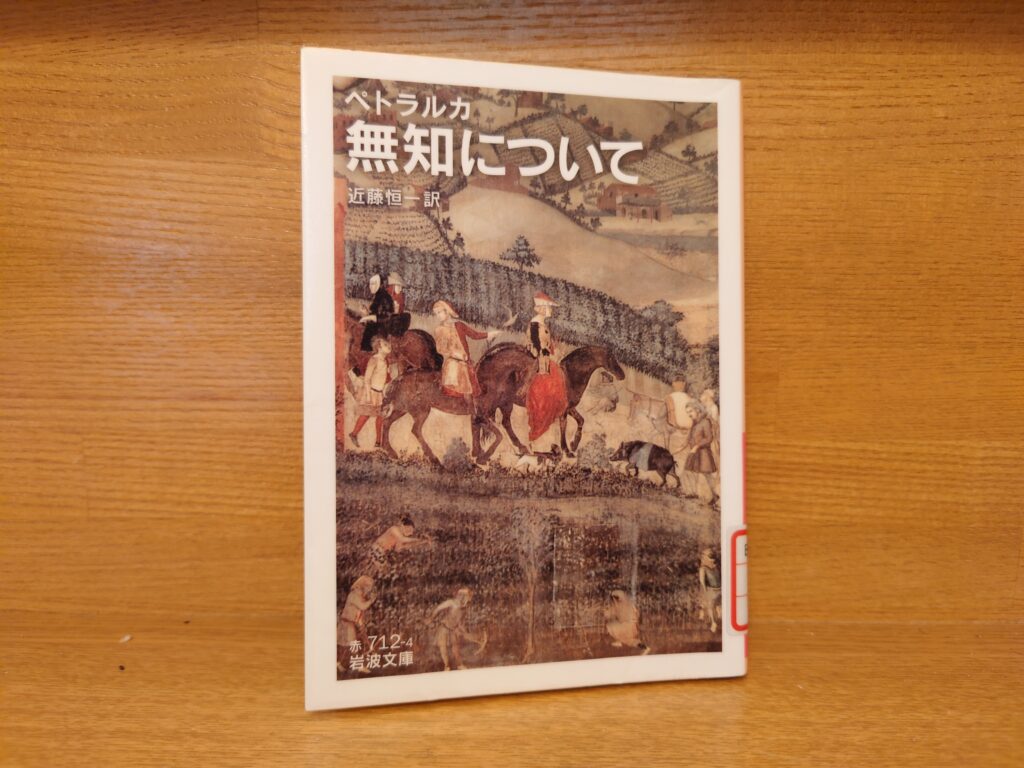
This work was born out of Petrarch's own experiences. Petrarch published this work as a rebuttal to the unjustified slander he had received, and since it is also a manifesto of Renaissance literature, one can only marvel at Petrarch's literary talent.
Knowledge is important, and the more knowledge, the better. However, if our perception and knowledge simply spread outward, there will only be an endless progression of knowledge proliferation. Spreading without returning to the self is nothing more than diffusion and self-oblivion. Know thyself" means to know thyself as a human being. The most important knowledge for us human beings is the knowledge of ourselves, the knowledge of man. The core of our intellectual activity must be the study of man.
What is the purpose of learning? What is the point of learning if all you want to do is accumulate knowledge and beat your opponent with arguments?
Petrarch argues as much.
If you do not have a clear idea of what you are learning for, no matter how much knowledge you accumulate, it will be counterproductive.
It was a surprise to me that Petrarch, the creator of the Renaissance movement, had already mentioned these ideas.
What is Ignorance?" is a work that gives us a very important insight into what the Renaissance was all about. I highly recommend this work not only to Petrarch himself, but also to anyone interested in the Renaissance.
Conclusion
What do you think of our recommendations for books about Florence following Rome?
I myself had never even heard of Petrarch before learning about Florence, and I had no idea that the city's history, politics, and art were so intricately intertwined.
It was very stimulating reading, especially about the relationship between Machiavelli and Florence. It was with these thoughts in mind that I was able to visit his grave, which was very memorable for me.
I hope you will also refer to the following travelogue for more information about this beautiful Florence.
The above is a list of recommended reference books to get to know Florence - a profound world of art, history, and literature, including Da Vinci, Machiavelli, and Dante.
Related Articles











